10-day Italy itinerary using public transport (+ optional destination)
Whether it’s your first visit to Italy or you’re returning for another dose of pasta, piazzas, and Renaissance art, this itinerary brings together Italy’s greatest hits – from the history of Rome to Florence’s artistry and the magic of Venice’s canals – all connected by easy, scenic train rides.
We’ve done this route ourselves and can confirm it’s a brilliant balance of sightseeing, food, and downtime. It’s designed for first-time visitors who want to see Italy’s highlights without rushing, but it’s just as good if you’re coming back and want to refine your route.
You’ll wander through ancient ruins, sip wine overlooking Tuscan hills, and glide down Venetian canals – all while travelling sustainably by train. And if you’ve got a few extra days, you can tack on a Naples extension for pizza, Pompeii, and southern charm.
Why choose this itinerary?
- Efficient and scenic: All travel is by train, which is comfortable, cheap, and better for the environment (and with incredible countryside views). Italy’s rail system is punctual and well-connected.
- Perfect for first-time visitors: This route covers Italy’s most popular cities, full of history, art, culture, and food.
- Flexible and customisable: Easy to tailor to your travel pace, with options to swap day trips or extend your stay. It will give you plenty of time to enjoy each city – slow travel at its best.
- Balanced mix: Includes a combination of structured sightseeing and leisure time for spontaneous discovery.
Day 1 – 3: Rome – the eternal city
Rome is a city that lives and breathes history.
With ancient ruins around every corner and a buzzing modern culture layered on top, it’s the kind of place where you’ll stumble across a 2,000-year-old column while out shopping.
It’s not everyone’s favourite Italian city – it can be intense – but once you’ve relaxed into the chaos you’ll love it.
Expect vibrant piazzas, delicious Roman cuisine, and an atmosphere that blends grandeur with a lived-in, chaotic charm.
Where to stay in Rome
Stay in Trastevere for a charming, bohemian feel with cobbled streets and buzzing nightlife, or opt for Monti if you want easy access to major attractions while staying in a more local area.
Day 1 – settle into Rome
Arrive in Rome and check into your hotel or apartment (we use Welcome Pickups for low cost airport transfers ). Don’t forget to book your airport transfer. Depending on when your flight gets here, go for a wonder around and get your bearings. If you have time, spend the afternoon doing this wine tasting and food pairing – topped off with gelato from a local gelateria.
In the evening, go for a wander and get lost – perhaps stopping for a glass of red. Walk from the Spanish Steps (a giant stairway and popular meeting spot) to the Trevi Fountain (a stunning Baroque fountain where tourists toss coins to ensure their return to Rome).
Eat dinner at a trattoria in Trastevere – a great area for authentic Roman cuisine and lively evening atmosphere. Trattorias are small wine bars, generally with small plates. We fell in love with them (and dreamt about opening in London one day!). If you didn’t have time for the wine tasting before, try this food and wine walking tour – it will take you to four different local restaurants to try authentic Roman food, and is a great way to see Trastevere and try some amazing food.
Day 2 – ancient Roman history
Spend the day in Ancient Rome. Start early at the Colosseum (a colossal Roman amphitheatre where gladiators once fought). Arrive for when it opens to avoid the crowds, and book your ticket in advance
Then, explore the Roman Forum (the ancient heart of Roman public life) and Palatine Hill (where Rome was said to be founded and later became the site of imperial palaces).
Have lunch nearby – try a casual Roman pizza al taglio (by the slice).
In the afternoon, walk to Piazza Venezia (the central square of Rome), climb the Altare della Patria (a massive white marble monument to Italy’s first king), and explore the Capitoline Museums if time allows.
Day 3 – explore the Vatican city
Spend the morning at Vatican City. Visit the Vatican Museums (home to centuries of priceless art), marvel at the Sistine Chapel (famous for Michelangelo’s ceiling), and climb the dome of St Peter’s Basilica for panoramic views.
After lunch in the Prati district, cross the Tiber River to discover Piazza Navona (a grand Baroque square), the Pantheon (a former Roman temple with an amazing dome), and Campo de’ Fiori (a lively square with a market and great people-watching).
End your day with a relaxed aperitivo and gelato.

Day 4 – 6: Florence – cradle of the Renaissance
Florence is compact, elegant, and full of artistic treasures.
The birthplace of the Renaissance, it boasts stunning architecture, world-renowned museums, and a deep-rooted sense of beauty and craftsmanship.
Expect romantic sunsets, inspiring art, and incredible Tuscan cuisine.
How to get from Rome to Florence
Take a high-speed train from Rome to Florence. It takes about 1.5 hours, and trains are very comfortable with decent seats and tables.
Book seats in advance for better fares and reserved seating.
You can also save time by picking up a pastry and coffee at the station, and eating it on the train.
Where to stay in Florence
Stay in Santa Croce for a lively yet authentic atmosphere or the Oltrarno district for artisan shops, traditional trattorias, and quieter evenings.
Day 4 – discover Florence
- Arrive in Florence and check in. The train station is within walking distance to Florence, but you can always get a hotel transfer or taxi if you don’t want to walk with your luggage.
- Begin by visiting the Duomo (Florence Cathedral), with its iconic red dome by Brunelleschi – climb it for incredible city views (book your ticket in advance – it gets booked up).
- Walk to Piazza della Signoria, admire Palazzo Vecchio (Florence’s town hall and symbol of civic power), then make your way to the Ponte Vecchio (a historic bridge lined with jewellery shops) to watch the sunset.
Day 5 – Florence’s art, culture and history
- Head to the Accademia Gallery to see Michelangelo’s David, one of the most famous sculptures in the world. Get here as early as possible – the queues are crazy (we got there before opening and still queued around 2 hours. Despite this, it was worth it!).
- Visit the Uffizi Gallery to see masterpieces by Botticelli, Leonardo da Vinci, and Raphael. Allow 2–3 hours.
- Spend the afternoon in the Boboli Gardens (a vast park with sculptures and Renaissance landscaping) or more wandering.
- Have dinner with views over the Arno River. There’s a few rooftop bars in this area too, where you can laze in the sun with a drink as romantic Florence unfolds beneath you.
Day 6 – day trip in Tuscany
- Take a day trip to Siena (a charming medieval town known for its shell-shaped piazza), San Gimignano (famous for its medieval towers), or the Chianti wine region. A wine tour from Florence is the perfect way to see the Tuscany countryside and taste some fantastic wine too.
- Or, hire a bike and go cycling in the Tuscan countryside (we borrowed bikes from our hotel). Florence is small, and you’ll quickly find yourself on quiet country roads. We just cycled wherever looked prettiest and ended up in in Fiesole, a cute town of just 15,000 people with a great town square (and loads of other historical sites). If cycling isn’t your thing, there’s a direct bus from Florence which takes 20 minutes, or you could get a taxi.
- Alternatively, if you like being looked after, there’s many different organised tours available to loads of different destinations. We’d recommend this wine tasting tour though (or, check out our guide to going on a wine tour from Tuscany)!
Tip: Museum entries in Florence often sell out during high season – always book tickets in advance.

Day 7–10: Venice – city of canals
Venice is truly one-of-a-kind – a floating city built on water, with no roads, just canals and footpaths.
It’s romantic, atmospheric, and a little surreal. Wander down alleyways, glide through canals, and soak up centuries of Venetian history and elegance.
It’s very touristy, and very few people live in Venice now. The Venetian authorities are trying to reduce the negative effects of tourism, such as limiting cruise ships. However, it still retains its charm.
There’s nowhere quite like Venice in the world. Although it’s the final stop on our 10-day Italy itinerary, it’s our favourite.
How to travel from Florence to Venice
Take a high-speed train from Florence to Venice (approx. 2 hours). Again the trains are clean and comfortable. We recommend Trainline to find and book cheap tickets.
Arrive at Santa Lucia Station and step into a city like no other. There’s no cars in Venice, so you’ll be walking to your hotel.
Where to stay in Venice
Choose Cannaregio for a more authentic, residential vibe, or Dorsoduro for a cultural neighbourhood with great galleries and quiet evenings.
Day 7 – get lost in Venice
- Settle into your hotel and take a stroll along the Grand Canal (the main waterway in Venice lined with palaces and historic buildings).
- Grab cicchetti (Venetian tapas) and a spritz from a local bàcaro (Venetian wine bar).
Day 8 – Venice’s streets and canals
- Visit St Mark’s Basilica (Venice’s cathedral with dazzling mosaics), Doge’s Palace (former seat of Venetian government, full of gothic splendour), and Campanile di San Marco (the bell tower offering stunning views over the lagoon).
- Wander through Rialto Market in the morning and discover hidden alleys in the afternoon.
- End your day with dinner along the canal or a classical concert in a historic church.
Day 9 – exploring outside Venice city centre
- Take a vaporetto (water bus) to the islands of Murano (famous for hand-blown glassmaking) and Burano (known for its colourful houses and traditional lace-making).
- Alternatively, explore lesser-known areas of Venice like Giudecca, Arsenale, or the Jewish Ghetto.
Day 10 – goodbye Venice and Italy
- Enjoy a gondola ride or morning coffee by the canal. Gondola rides are insanely expensive, so a budget option is to take a vaporetto.
- Shop for souvenirs (look for handmade masks or Murano glass), then transfer to the airport for your departure.
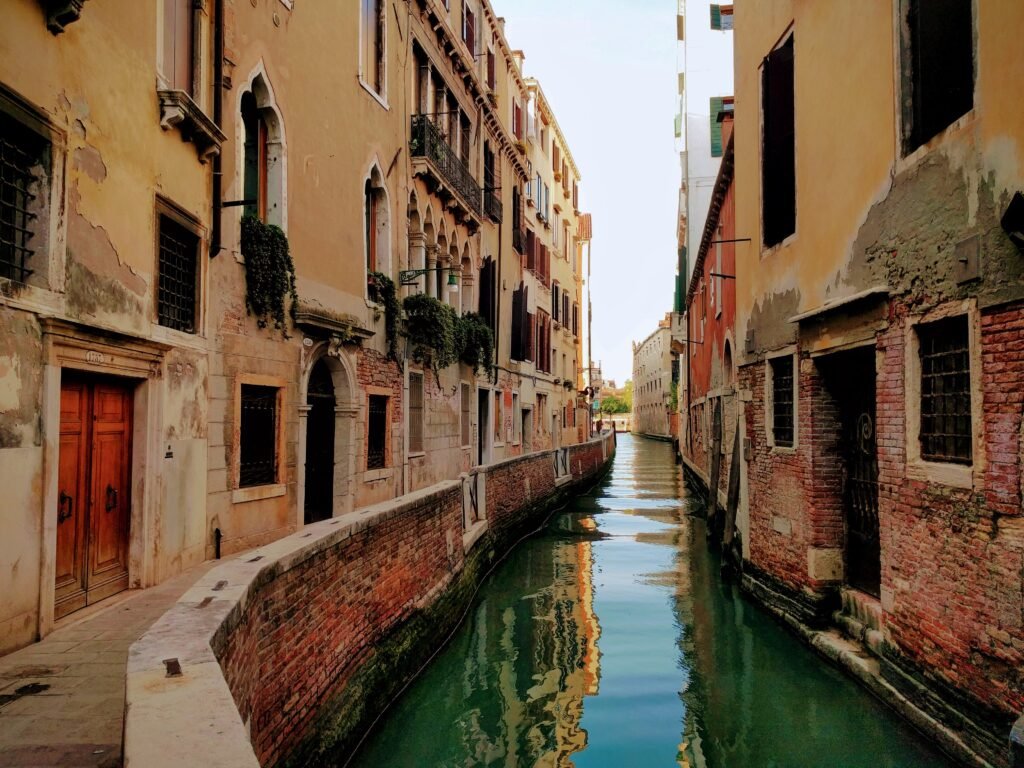
Our recommendations
🚕 Book your airport transfer on Welcome Pickups
🚗 Hire a car from Discover Cars
📝 Get your travel insurance from EKTA
📱 Get cheap data abroad with an eSim from Yesim
🚌 Book a tour on Viator or GetYourGuide
Optional Naples extension (3 days)
Our 10-day Italy itinerary fits in three beautiful Italian cities, but if you can extend your holiday then you can visit Naples too.
Naples is lively, gritty, and bursting with character.
It’s the birthplace of pizza and a gateway to some of Italy’s most fascinating historical sites such as Pompeii.
Like Rome, it can be a bit of a marmite destination – it’s dirty and rundown in places – but for us it’s architecture, culture and history made up for it.
Expect passionate locals, bold flavours, and a unique southern Italian energy.
How to get from Rome to Naples
If you can fit Naples in, we’d recommend going there from Rome. You can get the high-speed train (1 hour) into Naples, then get the train onto Florence when you’re ready to leave. Or, you could fly into Naples for a few days and then get the train onto Rome, before following the rest of this itinerary.
Book your ticket on Trainline in advance (they’re great for finding cheaper prices too).
Tip: if Naples doesn’t take your fancy, consider travelling onto stunning Lake Como from Venice
Day 11 – Naples’ historic centre
- Explore Naples’ historic centre, a UNESCO World Heritage Site.
- Walk down Spaccanapoli (a narrow street slicing through the city), the Duomo di San Gennaro (Naples’ cathedral), and the Naples Underground (ancient Greek and Roman ruins beneath the city).
- Enjoy authentic Neapolitan pizza from L’Antica Pizzeria da Michele or Sorbillo.
- Have a look at these great shore excursions from Naples too.
Day 12 – exploring Pompeii
- Day trip to Pompeii or Herculaneum, two preserved ancient cities buried by the eruption of Mount Vesuvius. You can spend a day in Pompeii on its own; some people only spend a morning, but it would be a shame to rush it.
- Some people climb Mount Vesuvius the same day – but like we say, you’ll limit your time in Pompeii. Instead, consider doing it another day.
- Getting from Naples to Pompeii is pretty easy, and will take you an hour or so.
Day 13 – the Amalfi Coast
- Take a trip to Sorrento for a taste of the Amalfi Coast or take a ferry to Positano, known for its cliffside charm and lemon groves.
- Alternatively, explore the Archaeological Museum of Naples, home to many original Pompeii artefacts, and spend more time wondering around Naples.
There’s also some great day trips you can do from Naples, if you fancy something different than the above or have more time, or check out this two day itinerary for Naples.
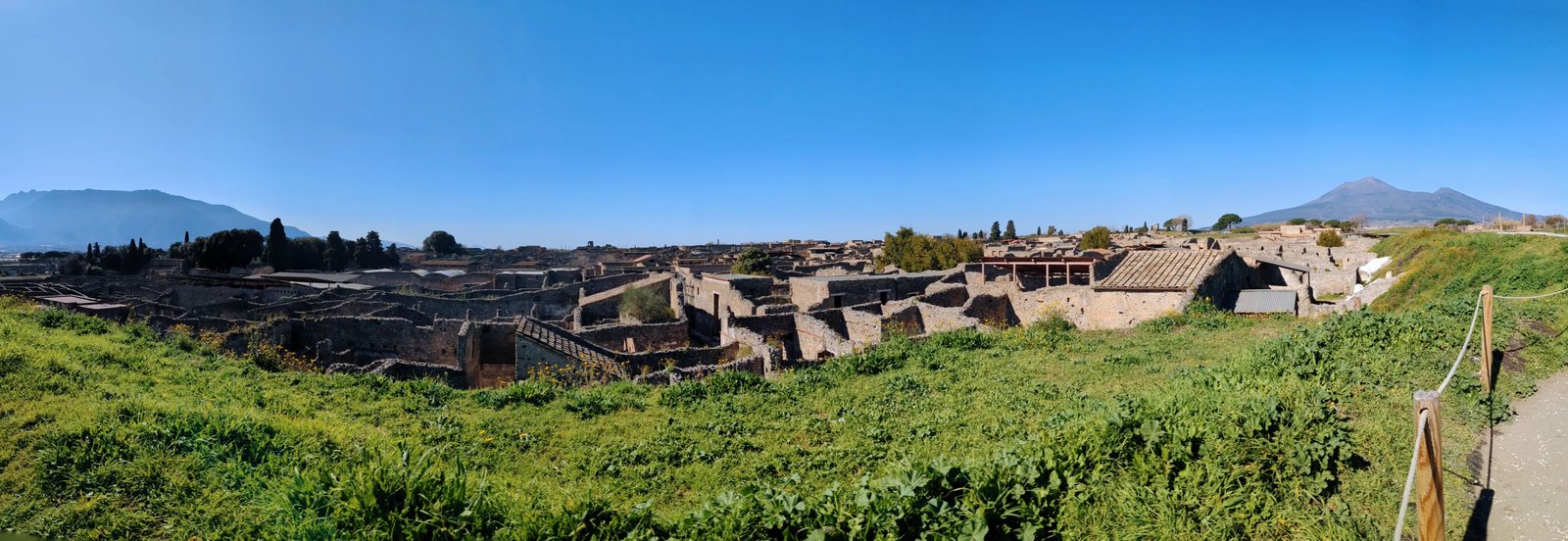
Our final travel tips for our 10-day Italy itinerary
- Best time to visit Italy: Spring (April to June) and early autumn (September to October) offer pleasant weather and fewer crowds. Flying (and booking your flights) at the right time can save you money.
- Train travel: The trains are easy enough to navigate, and make moving between cities fast. Book on Trainline for the best prices.
- Language: English is spoken in tourist areas. Learning a few basic Italian phrases will endear you to locals.
- Safety: Italy is generally safe, but be aware of pickpockets in crowded tourist spots and especially round train stations.
- Money: Italy can be expensive, so read our guide on how to make your money go further.
Conclusion
This 10-day Italy itinerary is ideal for visitors who want to explore Italy’s most iconic destinations without rushing.
With easy train connections, time for meaningful exploration, and the option to extend to Naples and the Amalfi Coast, it offers the perfect introduction to la dolce vita. Slow travel at its best.
This page contains affiliate links. If you make a purchase through one of these links we make a small commission to help run this site, at no cost to you. Making a commission never affects the advice we give - see our content policy.


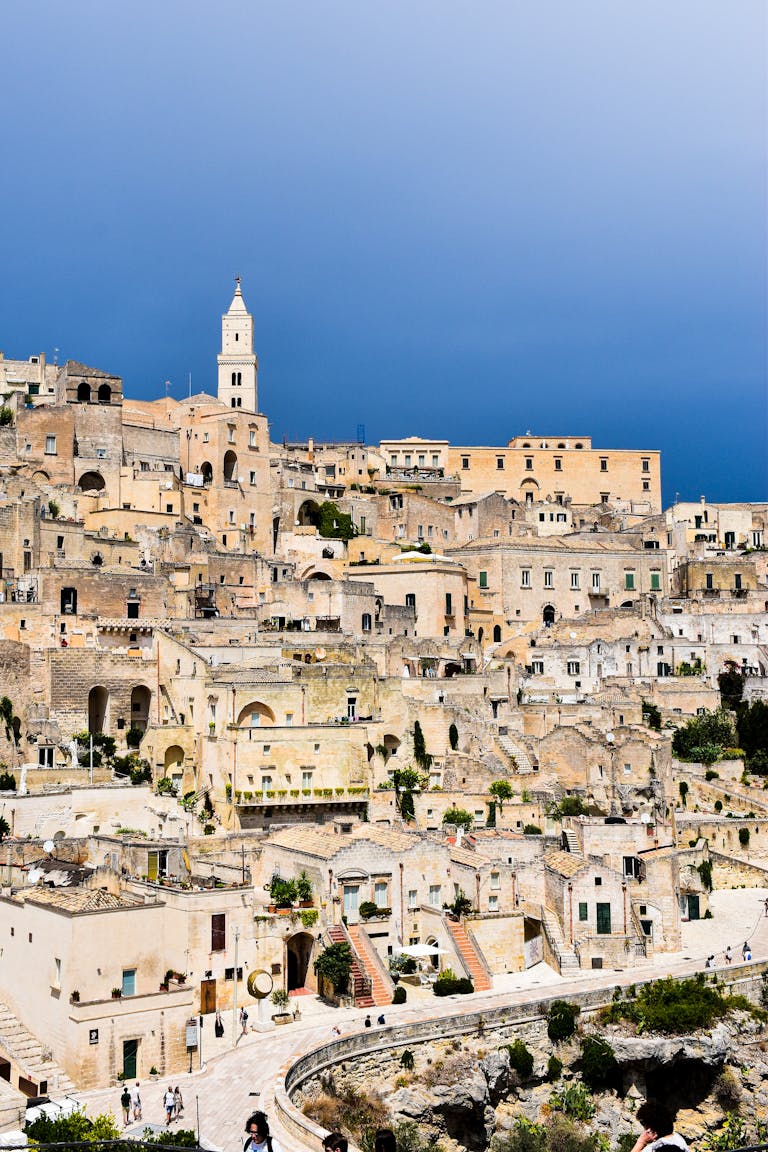

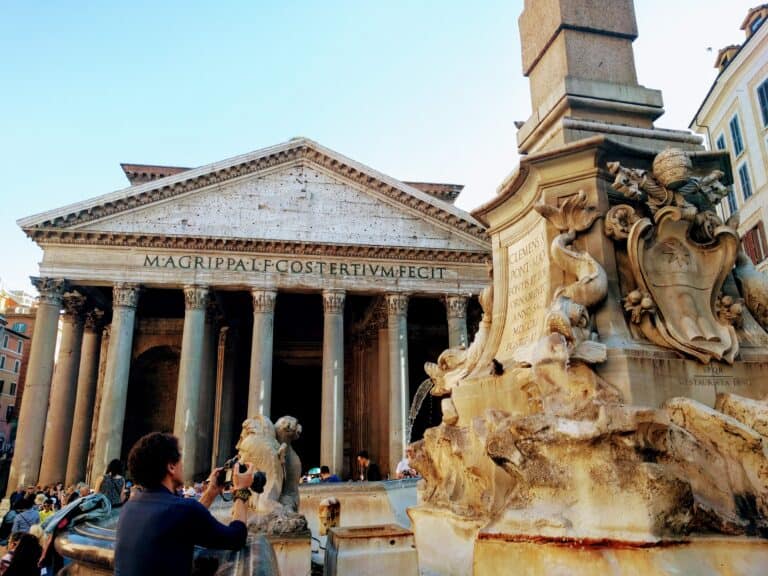
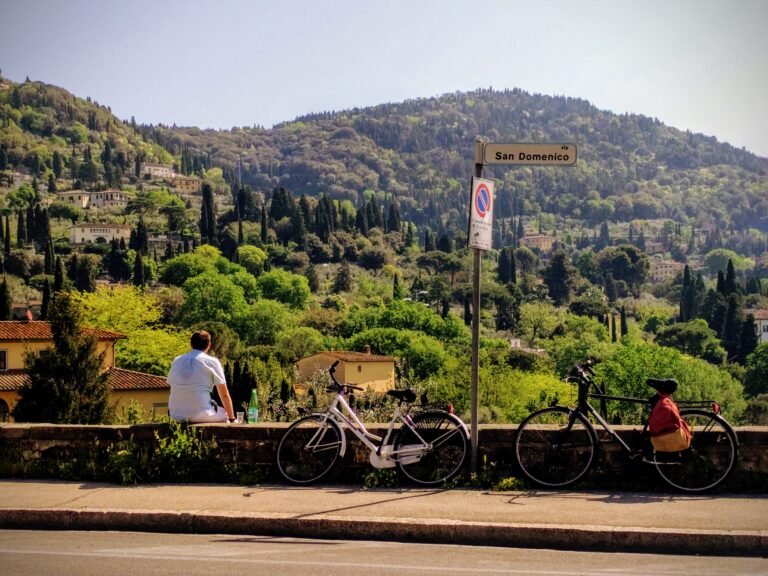

This is great info! It’s been years, but I’ve visited many of the places you mentioned! Thanks for sharing.
Sounds like it’s time for another visit! 🙂
Traveling to Italy and Rome is on my bucket list within the next five years. This was an excellent post with great info!
We definitely recommend it – it’s one of our favourite countries. So many places to visit there as well!
Wow, I will be in France this fall with a pit stop in Italy for a little while. I wish I seen this list before booking my trip, because I would’ve stayed longer. I love this list.
We love France too – enjoy your holiday!